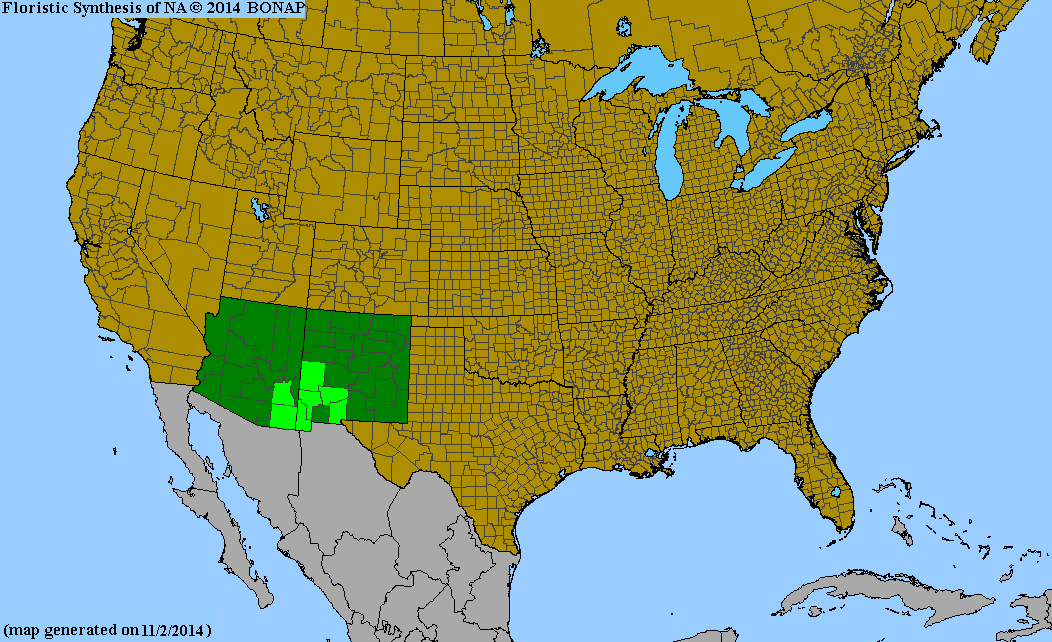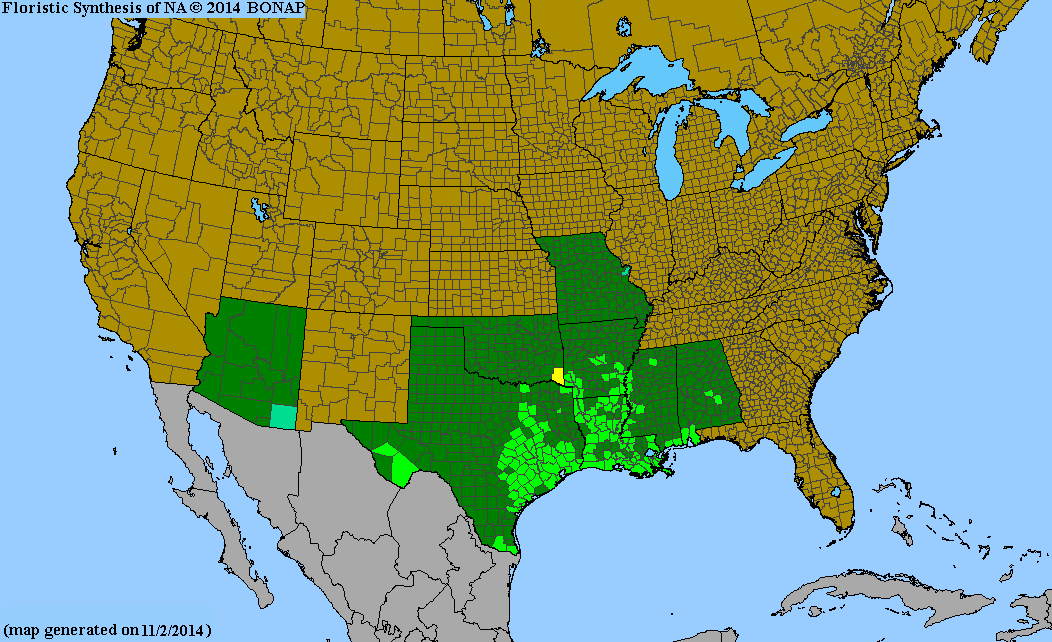Click on the images below to see larger versions.
| Scientific Name | Verbena neomexicana | USDA PLANTS Symbol | VENE |
| Common Name | Hillside Vervain, New Mexico Verbena | ITIS Taxonomic Serial No. | 32109 |
| Family | Verbenaceae (Verbena) | SEINet Reference |
Click Here |
| Description |
Habitat: Desert scrub, dry washes, plains, foothills and canyons, 2000 to 6000 ft. Plant: Slender, erect perennial, 12 to 28 inches tall, single or a few hairy stems branched from base and above. Leaves: Opposite, narrowly ovate in outline and deeply incised-dentate or pinnatifid, 3/4 to 2 inches long, sessile or nearly so, hairy surfaces and somewhat glandular; lower leaves withering early. Inflorescence: Small, violet flowers in 1 to 3 slender elongated spikes per stem; each flower subtended by a small ovate-triangular bract, shorter than the calyx; 5-toothed calyx 1/8 to 3/16-inch long; blue to viloet, rarely white, tubular corolla with 5 united flaring petals (salverform) slightly longer than the calyx. Bloom Period April to November. References: "Manual of the Vascular Plants of Texas" by Correll and Johnston, SEINet and Southest Arizona Wildflowers and Plants. Note: V. neomexicana is not supposed to exist in the Big Bend area according to the BONAP map; however it appears in the SEINet Big Bend Checklist. It is possible that the images below are actually V. perennis or V. canescens; however, there are differences in leaf shape, hairiness, and bracts with the images being more like V. neomexicana in these respects. |
BONAP Distribution Map |
Texas Status: Native |
| Scientific Name | Verbena xutha | USDA PLANTS Symbol | VEXU |
| Common Name | Gulf Vervain | ITIS Taxonomic Serial No. | 32081 |
| Family | Verbenaceae (Verbena) | Wildflower Center Ref. | Click Here |
| Description |
Habitat: Sandy soils of beaches, roadsides, fields and blackland prairies; generally found in Southeast and South Texas with isolated populations in the Big Bend area. Plant: Upright annual often growing in clumps; stems up to 6 feet tall, tetragonal, hairy, branched. Leaves: Opposite, pinnatifid or 3-lobed, central lobe much larger (2 to 5 inches long) than 2 side lobes; lobes of upper leaves lanceolate; margins coarsely dentate and leaf surfaces hairy. Inflorescence: Elongated spikes of blue-purple 5-lobed blossoms 1/2-inch wide or less with pale centers. Bloom Period March to October. References: "Wildflowers of Texas" by Michael Eason and "Manual of the Vascular Plants of Texas" by Correll and Johnston. |
BONAP Distribution Map |
Texas Status: Native |







